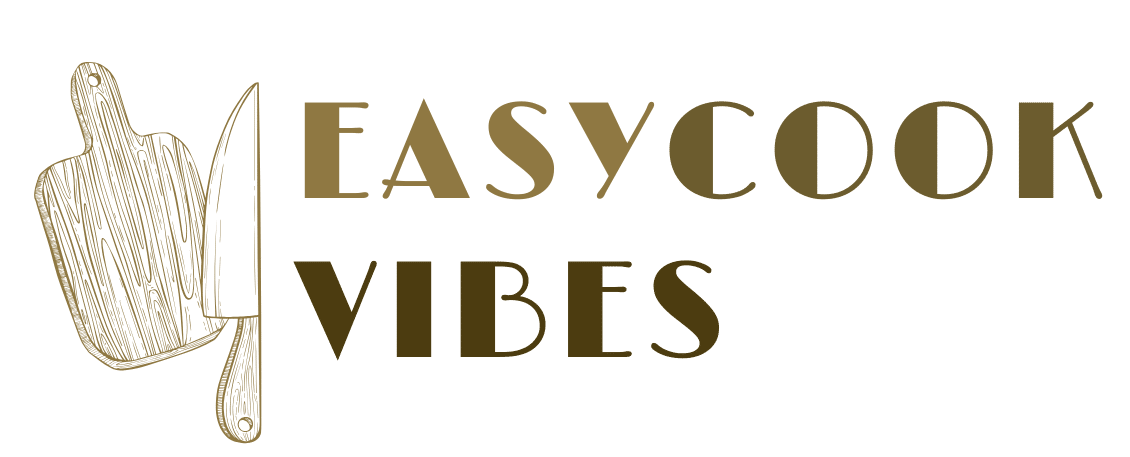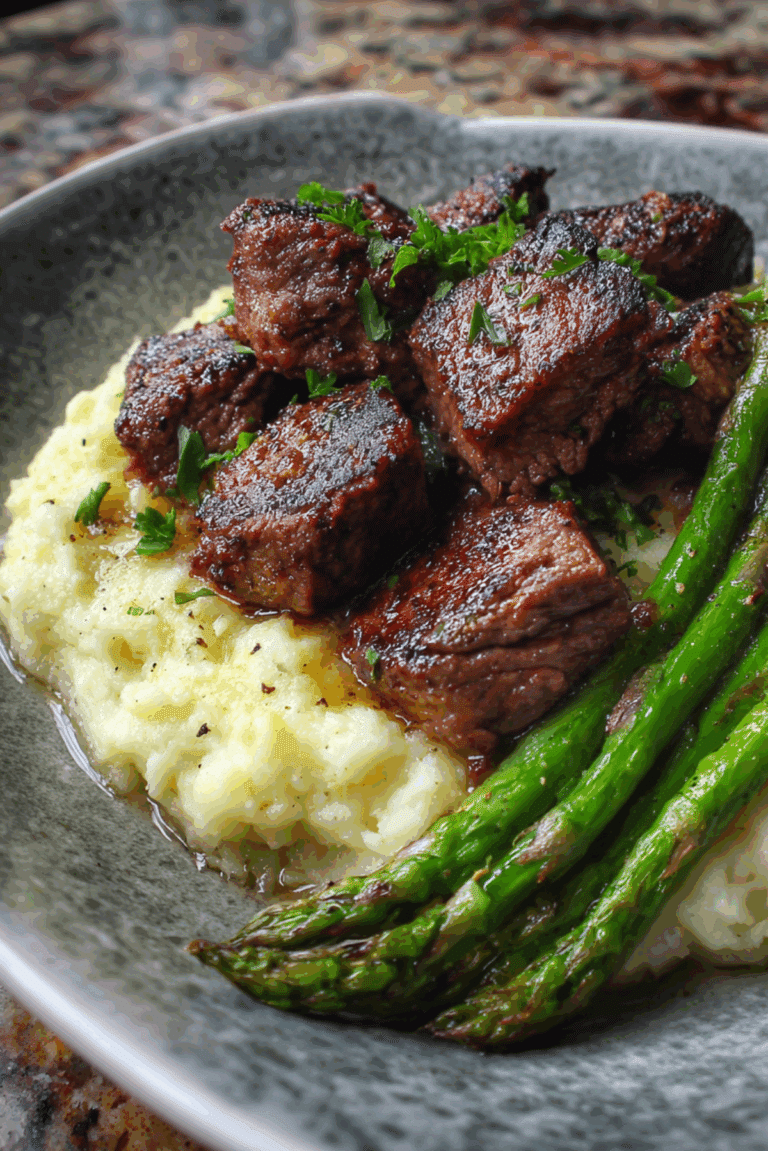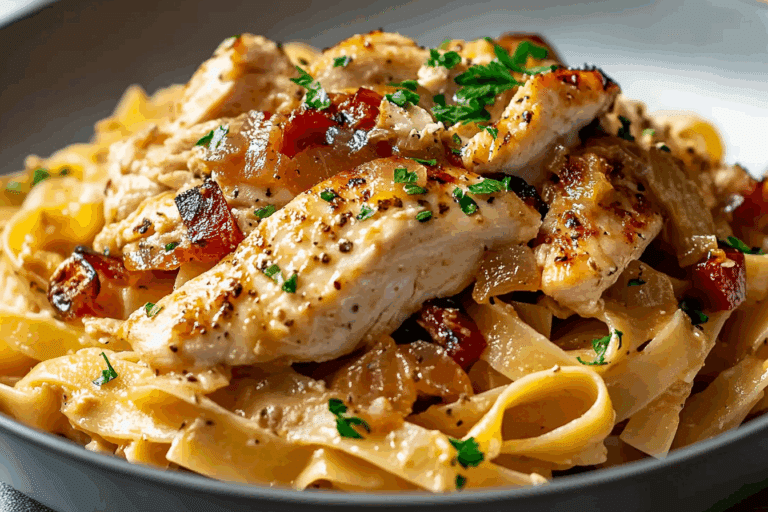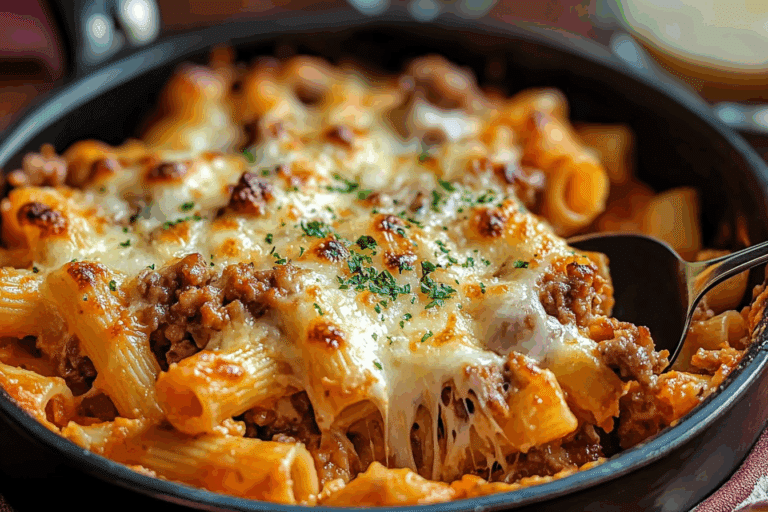Steak Tartare with Duck Fat Crisps
Steak Tartare with Duck Fat Crisps is a bold dish that captures the essence of indulgent simplicity. The rich, buttery duck fat crisps create the perfect crunchy companion to the finely minced raw beef, seasoned just right and crowned with a glistening egg yolk. Every bite is a balance of texture and flavor, bringing together silky meat, sharp pickles, and that deeply savory crunch. It’s the kind of recipe that turns heads and starts conversations at the table.
Behind the Recipe
This dish takes me back to a small Parisian bistro I stumbled into on a rainy afternoon. The warmth of the interior, the clink of wine glasses, and the aroma of crisping fat behind the counter—it was magic. Their steak tartare was rustic and perfect, but it was the side of duck fat potatoes that sealed the memory. This recipe is my loving nod to that moment, merging the tartare tradition with the unapologetic indulgence of duck fat.
Recipe Origin or Trivia
Steak Tartare has roots in French cuisine, though its name harks back to the Tatars of Central Asia. The version we recognize today began showing up in European menus in the early 20th century, originally called “steak à l’Americaine” with tartar sauce on the side. Eventually, the sauce faded and the dish evolved into a raw beef delicacy dressed with capers, onions, and egg. It’s a classic example of less is more—when ingredients are high quality, they shine.
Why You’ll Love Steak Tartare with Duck Fat Crisps
This recipe is more than just a meal. It’s a conversation starter and a flavor bomb all in one. Here’s why it deserves a place on your table:
Versatile: Serve it as an elegant starter or a light lunch with a chilled glass of white wine.
Budget-Friendly: A little quality beef goes a long way, making it surprisingly affordable.
Quick and Easy: No stove needed. Just chop, mix, crisp, and serve.
Customizable: Add your favorite herbs or swap in different pickles to make it yours.
Crowd-Pleasing: Even skeptics often become fans after the first bite.
Make-Ahead Friendly: Prepare components ahead and assemble just before serving.
Great for Leftovers: Use leftover duck fat crisps in salads or alongside eggs the next morning.
Chef’s Pro Tips for Perfect Results
When working with raw beef, precision and freshness are everything. Here’s how to make it shine:
- Use tenderloin or sirloin: Ask your butcher for the freshest cut.
- Chill everything: Cold beef is easier to dice finely and keeps the tartare fresh.
- Hand chop the beef: A knife gives the best texture compared to a grinder.
- Season boldly: Tartare needs salt, acid, and spice to come alive.
- Serve immediately: The fresher, the better for both flavor and food safety.
Kitchen Tools You’ll Need
Let’s make sure your tools are ready before diving in.
Sharp Chef’s Knife: For finely dicing the beef and aromatics.
Mixing Bowl: For combining all tartare ingredients evenly.
Heavy Skillet: To crisp the duck fat potatoes to golden perfection.
Slotted Spoon: For removing crisps from the fat without excess oil.
Paper Towels: To drain the duck fat crisps and keep them crunchy.
Ingredients in Steak Tartare with Duck Fat Crisps
This recipe is all about balance—rich, sharp, salty, and crisp. Here’s what you’ll need:
- Beef Tenderloin: 200g, finely diced. This cut is lean and tender, perfect for tartare.
- Shallots: 1 small, minced. Adds a gentle onion bite.
- Capers: 1 tablespoon, chopped. Brings tang and brine.
- Cornichons: 2 tablespoons, finely diced. For crunch and acidity.
- Dijon Mustard: 1 teaspoon. Adds a zesty kick.
- Worcestershire Sauce: 1 teaspoon. Deep umami flavor.
- Egg Yolk: 1, very fresh. Richness to tie everything together.
- Salt and Pepper: To taste. Essential for balance.
- Duck Fat: 1/2 cup. For frying the crisps to golden glory.
- Yukon Gold Potatoes: 2, thinly sliced. The crisp element.
- Fresh Chives: 1 tablespoon, chopped. Adds a pop of freshness.
Ingredient Substitutions
Need to make a swap? Here are some great alternatives:
Beef Tenderloin: Sirloin or strip steak (as long as it’s fresh and lean).
Cornichons: Dill pickles or even pickled green beans.
Dijon Mustard: Whole grain mustard for more texture.
Worcestershire Sauce: A dash of soy sauce with lemon juice.
Duck Fat: Olive oil or beef tallow for a similar richness.
Yukon Gold Potatoes: Russets will work fine, just slice them extra thin.
Ingredient Spotlight
Duck Fat: This flavorful fat gives the crisps an unforgettable richness and golden crunch that vegetable oils just can’t match.
Capers: These little green gems pack a salty, lemony punch that cuts through the richness of the tartare beautifully.
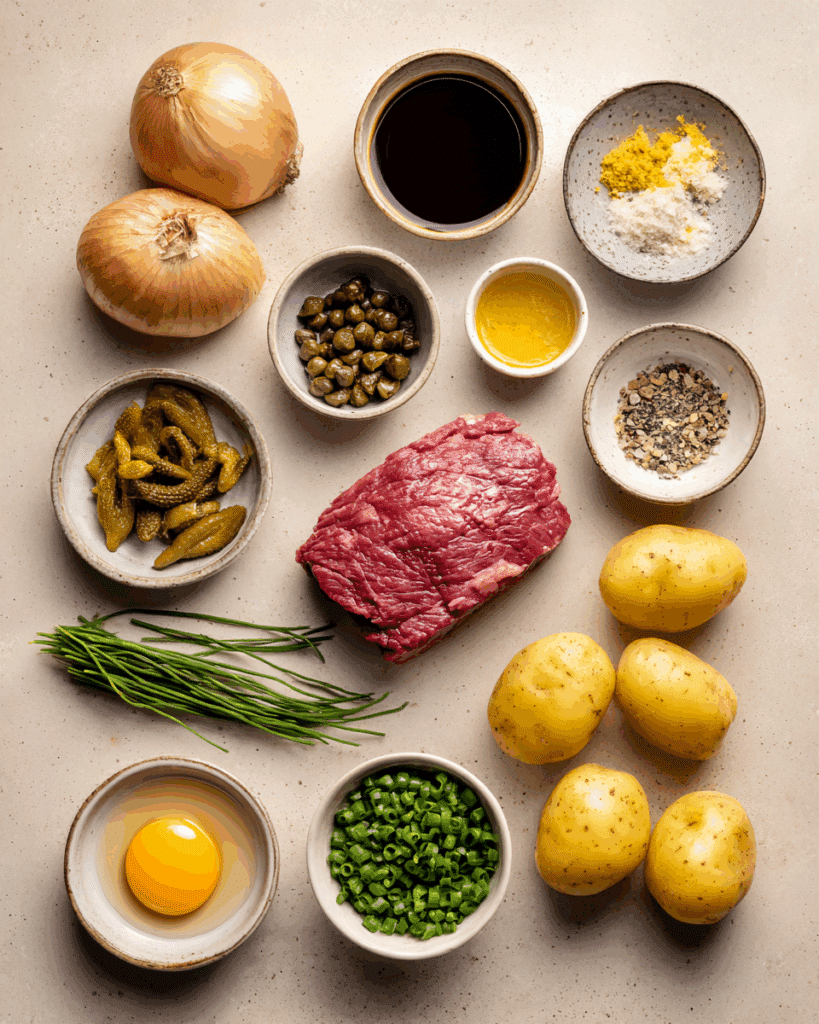
Instructions for Making Steak Tartare with Duck Fat Crisps
Get ready to make a restaurant-worthy dish right at home. Here’s how:
- Preheat Your Equipment:
Place your skillet over medium heat and begin warming the duck fat until shimmering. - Combine Ingredients:
In a mixing bowl, combine the diced beef, shallots, capers, cornichons, mustard, Worcestershire, salt, and pepper. Mix gently until everything is evenly coated. - Prepare Your Cooking Vessel:
Line a plate with paper towels to catch the crisps. Test the duck fat with a small slice of potato—it should sizzle immediately. - Assemble the Dish:
Using a ring mold or just a spoon, shape the tartare onto a chilled plate. Create a small well in the center and gently place the egg yolk on top. - Cook to Perfection:
Fry the potato slices in batches until golden and crisp, about 3 to 4 minutes per side. Drain on the prepared plate and sprinkle with salt. - Finishing Touches:
Sprinkle chives over the tartare and place the crisps to the side or leaning against the meat for texture contrast. - Serve and Enjoy:
Serve immediately while the crisps are hot and the tartare is fresh.
Texture & Flavor Secrets
This dish thrives on contrast. The beef is tender and cool, the crisps are hot and crunchy, and the capers and mustard punch through with sharp brightness. The egg yolk adds a luxurious creaminess that ties it all together. Every component plays its part in creating a memorable bite.
Cooking Tips & Tricks
Here’s how to get the most out of your tartare experience:
- Always use the freshest beef possible and chop it right before serving.
- Keep all components cold except for the crisps.
- Let the tartare sit for just 2 minutes to meld flavors before plating.
What to Avoid
These small mistakes can throw off the dish, but they’re easy to prevent:
- Using pre-ground beef. It’s not safe for raw consumption and ruins texture.
- Overmixing. It’ll make the beef mushy.
- Undercooking or overcrowding your crisps. They’ll turn soggy.
Nutrition Facts
Servings: 2
Calories per serving: 520
Note: These are approximate values.
Preparation Time
Prep Time: 20 minutes
Cook Time: 10 minutes
Total Time: 30 minutes
Make-Ahead and Storage Tips
You can prep your ingredients a few hours in advance. Dice the beef, chop the aromatics, and store everything separately in the fridge. Duck fat crisps can be fried a few hours ahead and reheated in the oven to restore crunch. Avoid storing assembled tartare—always serve fresh.
How to Serve Steak Tartare with Duck Fat Crisps
Plate the tartare neatly, centered with the yolk glowing on top. Stack the crisps artfully beside it or serve in a small bowl. Add a chilled glass of white Burgundy or a non-alcoholic herbal soda to complement the flavors.
Creative Leftover Transformations
If you happen to have leftover crisps, crumble them over a soft-boiled egg or use them to top a creamy soup. Leftover beef? Sear it for a quick stir-fry the next day.
Additional Tips
- Chill your serving plates for a professional presentation.
- A touch of lemon zest over the tartare brightens the dish.
- For extra heat, add a dash of Tabasco or horseradish.
Make It a Showstopper
Use a ring mold to shape the tartare cleanly. Garnish with microgreens, edible flowers, or a dusting of smoked paprika around the plate’s edge for that extra wow factor.
Variations to Try
- Asian-Style Tartare: Add sesame oil, soy sauce, and scallions for a fusion twist.
- Avocado Base: Serve the tartare on a bed of thinly sliced avocado.
- Truffle Touch: A few drops of truffle oil elevate this to luxe territory.
- Spicy Kick: Mix in finely diced chili or harissa for heat lovers.
- Vegetarian Version: Try finely chopped beets and mushrooms with similar seasonings.
FAQ’s
Q1: Can I use store-bought beef for tartare?
A1: Only if it’s extremely fresh and labeled safe for raw consumption. Otherwise, ask your butcher for a trusted cut.
Q2: What cut of beef is best?
A2: Tenderloin or sirloin work best because they’re lean and tender.
Q3: Is duck fat necessary?
A3: It’s what makes the crisps extra special, but you can use another fat like olive oil if needed.
Q4: How long can I store leftover tartare?
A4: It’s best eaten immediately. Leftovers should be discarded if not consumed within 2 hours.
Q5: Can I make it without the egg yolk?
A5: Yes, you can skip it or replace with a dollop of aioli for richness.
Q6: What’s the difference between tartare and carpaccio?
A6: Tartare is minced or chopped, while carpaccio is sliced very thin.
Q7: What side dishes go well with this?
A7: Light greens, a citrusy salad, or even a bowl of fries complement beautifully.
Q8: Can I prep this for a party?
A8: Yes, just prep components and assemble right before serving.
Q9: Are there vegetarian options?
A9: Yes, try beetroot tartare or mushroom tartare.
Q10: Is it safe to eat raw beef?
A10: When sourced properly and handled correctly, yes. Use trusted suppliers and consume promptly.
Conclusion
There’s something undeniably elegant and bold about Steak Tartare with Duck Fat Crisps. It’s one of those recipes that turns a simple evening into a memorable occasion. Trust me, you’re going to love this. Serve it up, take a bite, and let every texture and flavor transport you somewhere unforgettable.
Print
Steak Tartare with Duck Fat Crisps
- Total Time: 30 minutes
- Yield: 2 servings
- Diet: Halal
Description
Silky beef tartare topped with a fresh egg yolk, paired with golden duck fat crisps for an indulgent yet balanced dish full of texture and bold flavor.
Ingredients
- 200g Beef Tenderloin, finely diced
- 1 small Shallot, minced
- 1 tbsp Capers, chopped
- 2 tbsp Cornichons, finely diced
- 1 tsp Dijon Mustard
- 1 tsp Worcestershire Sauce
- 1 Egg Yolk
- Salt and Pepper, to taste
- 1/2 cup Duck Fat
- 2 Yukon Gold Potatoes, thinly sliced
- 1 tbsp Fresh Chives, chopped
Instructions
- Place your skillet over medium heat and begin warming the duck fat until shimmering.
- In a mixing bowl, combine the diced beef, shallots, capers, cornichons, mustard, Worcestershire, salt, and pepper. Mix gently until everything is evenly coated.
- Line a plate with paper towels to catch the crisps. Test the duck fat with a small slice of potato—it should sizzle immediately.
- Using a ring mold or just a spoon, shape the tartare onto a chilled plate. Create a small well in the center and gently place the egg yolk on top.
- Fry the potato slices in batches until golden and crisp, about 3 to 4 minutes per side. Drain on the prepared plate and sprinkle with salt.
- Sprinkle chives over the tartare and place the crisps to the side or leaning against the meat for texture contrast.
- Serve immediately while the crisps are hot and the tartare is fresh.
Notes
- Chill all ingredients before assembling for best texture and freshness.
- Use a ring mold to shape tartare neatly for presentation.
- Fry crisps in small batches to keep them crunchy and golden.
- Prep Time: 20 minutes
- Cook Time: 10 minutes
- Category: Appetizer
- Method: Raw Preparation, Frying
- Cuisine: French
Nutrition
- Serving Size: 1 plate
- Calories: 520
- Sugar: 1g
- Sodium: 480mg
- Fat: 38g
- Saturated Fat: 12g
- Unsaturated Fat: 24g
- Trans Fat: 0g
- Carbohydrates: 15g
- Fiber: 2g
- Protein: 28g
- Cholesterol: 180mg
